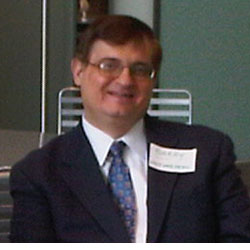 Originally published on August 11, 2010 in GreenBiz.com
Originally published on August 11, 2010 in GreenBiz.com
Barry Cik is a Board Certified Environmental Engineer, member of the Safer Chemicals, Healthy Families coalition, and founder of Naturepedic, an organic mattress company based in Cleveland, Ohio.
Chemical Regulations and the Modern Mattress: The Stuff of Nightmares
I’ve spent the last 30 years as an environmental engineer, but it wasn’t until I became a grandfather that I fully understood the extent to which industrial chemicals had invaded the American home.
My rude awakening came when my wife sent me to buy a crib mattress for our first grandchild. I was appalled by what I found; the crib mattresses were full of industrial chemicals. Because of my environmental engineering background, I knew how harmful these chemicals could be to a developing child.
No one sets out to make toxic baby mattresses; it just evolved that way. As just one example, nearly all baby mattresses are covered with polyvinyl chloride (PVC) to make them waterproof. Because PVC is rigid, manufacturers mix in a class of chemicals called phthalates to soften the PVC. When added to PVC, phthalates don’t stay put; they leach into the air, making children more vulnerable to asthma, reproductive harm and cancer. One short-sighted decision leads to another and, before you know it, you’ve got a very unhealthy baby mattress.
The good news is, Congress is considering legislation that requires chemical manufacturers to show that their products are safe before they end up in products. Called the Safe Chemicals Act in the Senate and the Toxic Chemicals Safety Act in the House, these proposals have the potential to improve Americans’ health and restore consumer trust in American businesses and products.
Now it is up to our elected officials to make sure these bills become law. Yet they will only succeed if we can all stand firm in the face of chemical industry lobbyists who will argue that more regulation will hurt small business. My story demonstrates that just the opposite is true.
Back at the baby store, I told the salesperson, “My grandfather slept on straw. I’ll have my grandchildren sleep on straw before I let them sleep on these mattresses. This is not progress.” That shopping trip six years ago spurred my sons and I to start our own business, Naturepedic. It took some work to find the right combination of materials and the right manufacturing process, but I’m proud to say that today we offer waterproof baby mattresses made with organic and non-toxic materials. Yes, you can make a baby mattress without toxic chemicals.
Today, businesses like mine are thriving thanks to rising consumer demand for non-toxic products. But there still is a problem: It’s hard for companies like Naturepedic to be fully certain which suppliers do and do not use toxic chemicals. Most of them do, whether they admit it or not. The blame rests squarely on our outdated system for regulating chemicals, the Toxic Substances Control Act of 1976 (TSCA). Under TSCA, chemical manufacturers don’t have to demonstrate that their products are safe for children, nor do they have to disclose all the ingredients.
This lack of transparency puts businesses like mine in a bind. We’re forced to foot the bill for what chemical manufacturers don’t provide, spending our own resources to independently assure safety.
By reforming TSCA, we can create a new marketplace where chemical safety information is easily available to all and businesses can make informed choices about what brands and materials to use, making it easier to avoid exposing workers and customers to harm.
I know from experience that once people realize that their kids’ beds, mattresses, toys and bottles may contain toxic chemicals, they start reading labels and put their trust in brands that can demonstrate safety. But not everyone can afford to act on this knowledge. Consider families living paycheck to paycheck that can’t always afford to buy the least toxic choice. Our next challenge is to turn frustrated consumers into vocal citizens who will support Congress in making non-toxic the norm, not a market niche.
I never expected to be a mattress maker. Honestly, this industry doesn’t have a great reputation. At the turn of the century, mattresses were frequently stuffed with garbage. It took individual states to enact laws that require mattress manufacturers to provide labels. Today, we need Congress to take action on an equally outrageous problem. My hope is that in 10 years our grandchildren will ask, “Really? They used to make crib mattresses with toxic chemicals?” And then, when toxic chemicals in crib mattresses are a thing of the past, I’ll be ready to finally retire and really enjoy my grandchildren.



